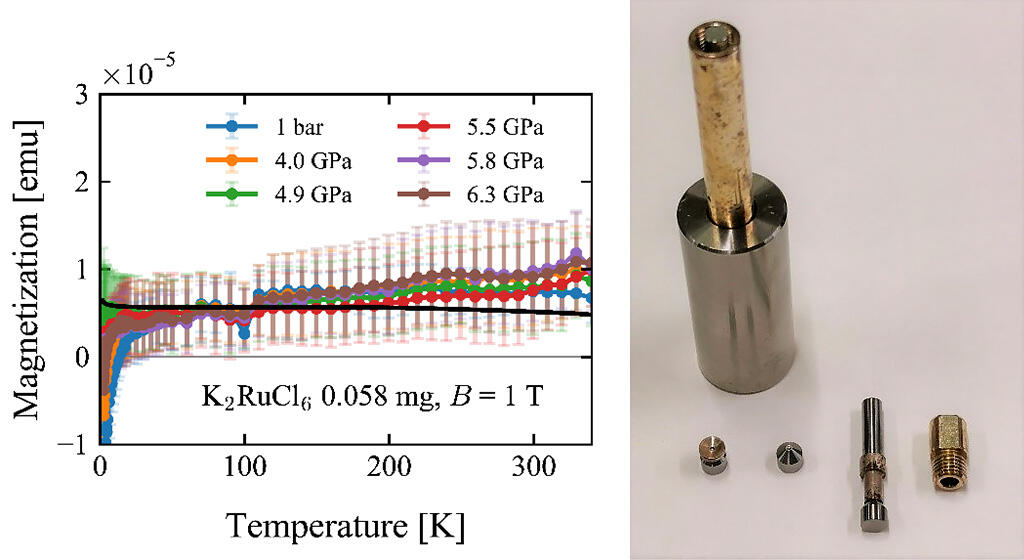A research group, led by Assistant Professor Naoka Hiraoka and Lecturer Kentaro Kitagawa of the University of Tokyo, Graduate School of Science, Department of Physics, discovered that, through magnetometry, a background signal close to zero could be achieved regardless of the temperature and magnetic field conditions by utilizing the signal cancellation between parts of a high-pressure device that is made from the same material. They optimized the structure of the high-pressure device through numerical calculations, adopting new non-magnetic materials for the components and improving the volumetric efficiency by changing the shape of the high-pressure generating component. Subsequently, they developed a high-pressure device that can obtain a higher Signal/Background (S/B) ratio than conventional devices.
High pressure can continuously change the state of matter, making it widely employable as a method of material development. However, it has rarely been used to search for new and weak magnetism exhibited by quantum spins. In this study, the research group improved the high-voltage magnetization measurement method by combining a small high-voltage device and a highly sensitive, commercially available SQUID magnetometer, achieving the ability to rapidly screen substances that exhibit a quantum phase.
As the high-pressure device is much larger than the sample, a key challenge is eliminating the effects of the high magnetism of the device. By optimizing the device structure via a numerical simulation and employing a different mathematical method for signal processing, more reliable measurements for weak magnetization were achieved. The background signal was estimated as part of the results, accounting for the change in shape of the high-pressure device when pressure was applied. The magnetization was extracted from the SQUID response using a linear transformation that is not easily affected by the estimation error. As a result, the magnetization of the van-Vleck paramagnetic material K2RuCl6 with a magnetic susceptibility of 3.3 × 10-4 emu/mol could be measured up to a pressure of 6.3 GPa.

Credit: The University of Tokyo
This study was published in the July issue of the Journal of the Physical Society of Japan, an English journal published by the Physical Society of Japan. Lecturer Kitagawa said, "Based on this result, the development of quantum spin liquids, which can potentially be applied to quantum computers, is expected to accelerate. In the future, we would like to make further improvements to allow it to be employed at higher pressures and lower temperatures so that we can utilize it for a wide range of magnetic and superconducting research."
■ S/B ratio:
The ratio of the signal derived from the sample to the background signal derived from the high-voltage device.
The accuracy of magnetization measurements using high-pressure devices is often limited by the S/B ratio rather than the sensitivity of the detector.
This article has been translated by JST with permission from The Science News Ltd.(https://sci-news.co.jp/). Unauthorized reproduction of the article and photographs is prohibited.




